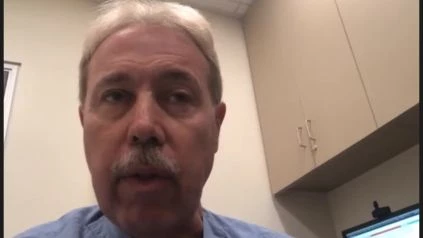Gregory Senofsky, MD of UCLA Health explains the intraoperative teamwork that greatly reduces the need for second surgery after lumpectomy.
____
FINDINGS
Breast cancer surgeons performing lumpectomies seek to spare healthy breast tissue while removing all cancerous cells, but determining appropriate margins and avoiding follow-up surgeries are ongoing challenges. This retrospective, single-institution review found that intraoperative teamwork between a breast cancer surgeon and a dedicated breast pathologist – utilizing tissue-marking ink and gross examination with magnification to evaluate margins – is an accurate, rapid and cost-effective means of significantly reducing the need for second-surgery margin re-excisions or mastectomies.
BACKGROUND
Several studies have shown significantly increased local breast cancer recurrence rates in patients with low-stage breast carcinoma in whom margins were positive for cancer cells or the margins were close – less than 1 millimeter – and the margins were not re-excised. Current acceptable re-excision rates for margins after lumpectomy using the “no tumor at ink†criteria are 14% for invasive breast cancer, and conversion rates to mastectomy are 4%.
METHOD A UCLA Health surgical oncologist with oncoplastic training and a dedicated breast pathologist led this retrospective study reviewing results of lumpectomies performed in 250 patients between 2017 and 2018. Unlike standard practice, the pathologist was involved in the intraoperative ink and gross specimen assessment of the lumpectomy to assist in real time for margin clearance. She also read the final pathology results after overnight fixation. Their margin requirement for the ink and gross assessment was 5.0 mm, and immediate re-excision at the time of the initial surgery was performed to achieve this result. Final margins of 2.0 mm were deemed acceptable for both invasive and pure ductal carcinoma in situ (DCIS) tumors.
RESULTS In comparison to the current “acceptable†re-excision rate of 14% to achieve a tiny margin of clearance for invasive breast cancer, the authors report an 8.8% rate (22/250) with a 2 mm margin. The re-excision rate for pure DCIS was 5.6% (14/250). Their conversion rate from lumpectomy to mastectomy was 2% (5/250), compared to the standard 4%. IMPACT The intraoperative collaboration between a breast cancer surgeon and breast pathologist is a cost-effective way to ensure that breast-cancer margins are appropriate during initial lumpectomies, greatly reducing the need for second-surgery margin excisions or mastectomies.
AUTHORS
Dr. Gregory Senofsky, a surgical oncologist with UCLA Health Hematology Oncology, conducted this study with Dr. Rashidi Soni, a breast pathologist and medical director of pathology and laboratory at Henry Mayo Newhall Hospital in Valencia, California. The review included results from 250 patients treated at the hospital.

